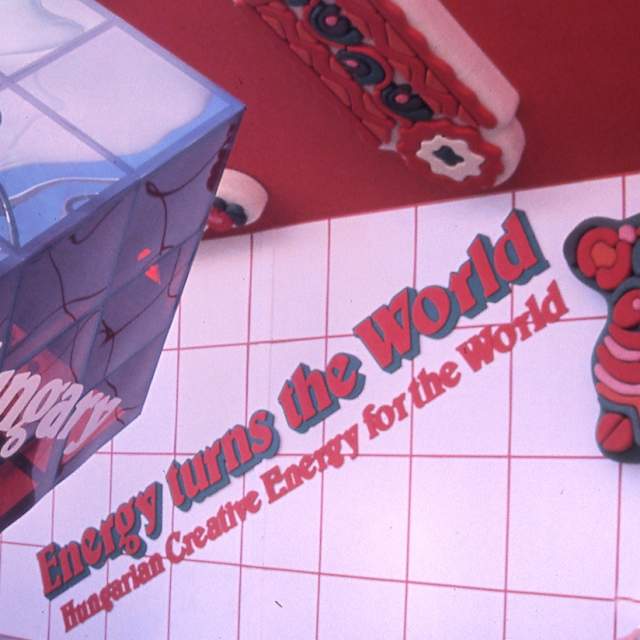Forty years ago, Knoxville hosted a world’s fair to highlight ways of dealing with a future with limited supplies of energy. Planned during the Energy Crisis of the 1970s, the big fair, originally known as the Knoxville International Energy Exposition, presented hundreds of solutions, both in terms of conserving energy and in finding new sources of it. But there was a lot more to the big party. What can you say about the 1982 World’s Fair to someone who doesn’t remember it? We might start with a few highlights and details that even people who were there may not recall. As it turns out, the 1982 World’s Fair may have been historic for things we didn’t appreciate at the time.
1.) The Knoxville Fair was the last successful world’s fair in America
The Knoxville world’s fair hit its marks for both attendance (11 million!) and revenue, if barely. The United States has hosted only one world’s fair since 1982, but that one in New Orleans in 1984 suffered from disappointing attendance and financial losses. Soon after that, the United States withdrew from the international organization that governs world’s fairs, so unless the nation rejoins, America may never host another.
 |
 |
| China Pavilion | courtesy Doka Howell | Tennessee Ampitheatre | courtesy Paul Holzshuher |
2.) The odd-looking Tennessee Amphitheatre is more important than we realized in 1982
Although people made fun of the Tennessee Amphitheatre, known to some in 1982 as “Dolly’s Bra,” it’s an architecturally significant building designed by German engineer Horst Berger employing a then-unusual tensile-fabric structure. Berger has since designed a wide range of structures, from Denver International Airport to Sea World in San Diego, to a major improvement to the Wimbledon Tennis Arena in London. Most of them bear a strong family resemblance to the Tennessee Amphitheatre.
3.) The Knoxville fair brought China to a world’s fair for the first time since 1904
In fact, the previously reclusive People’s Republic of China had never hosted a pavilion at any world’s fair before the one in Knoxville in 1982. The China pavilion was so unusual that it was the Fair’s single biggest draw. Hundreds of thousands of people waited in line for hours to see the unusual pavilion, which was a bazaar of artisans and historical artifacts, including terra cotta warriors and bricks from the Great Wall.
4.) The World’s Fair was a good place to spot celebrities
The World’s Fair touted an amazing variety of famous people who came as scheduled performers, ranging from Ricky Skaggs, when he was a young mandolinist just becoming famous, to the still-mysterious bluesman Leon Redbone, to legendary comedian Bob Hope—and most of those performers took some time to take in the Fair. But many celebrities attended just as we did, as visitors. They included boxing champion Sugar Ray Leonard, the iconic rock band the B-52s, and rock’n’roll pioneer Jerry Lee Lewis, who played an unannounced piano show for an astonished lunchtime crowd at the Strohaus.
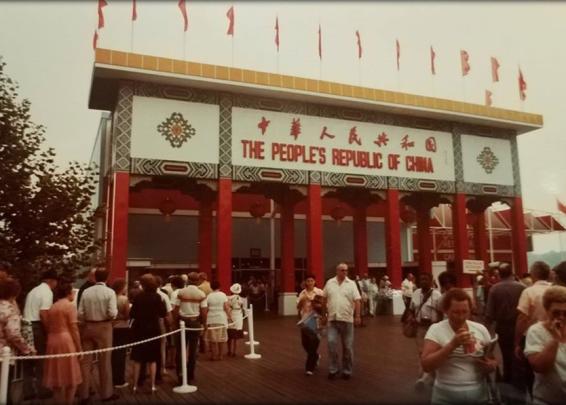 |
 |
| China Pavilion | courtesy UT Libraries | European Community Pavilion | courtesy Chris Cox |
5.) The Knoxville Fair saw the first-ever pavilion representing what became known as the European Union.
It was then known as the European Economic Community, and its modest pavilion, situated alongside those of individual European nations, was puzzling to many visitors. But its staff predicted a future day when European nations would use the same currency and make economic choices jointly.
6.) The United Kingdom closed their pavilion for one day in July—for a personal reason
It was the day Princess Diana gave birth to a blond child that would be known as Prince William, and the British staffers were given the day off to celebrate. Coincidentally, it happened during United Kingdom Week at the Fair, when there were British performances and celebrations all over the fair site. In the days following that private party, lines into the UK pavilion were longer than ever before. The exhibit already included a continuous video loop of the royal wedding, the year before, but afterwards staff were expected to answer hundreds of questions about the royal baby.
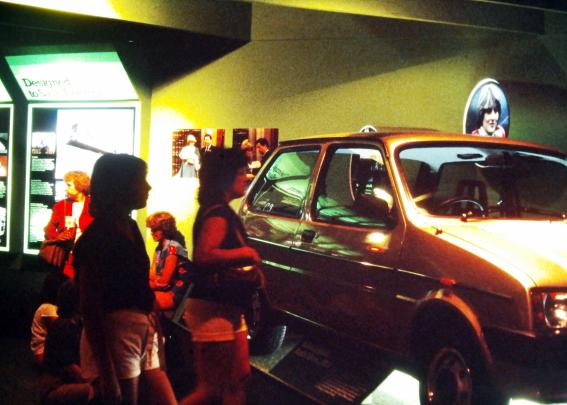 |
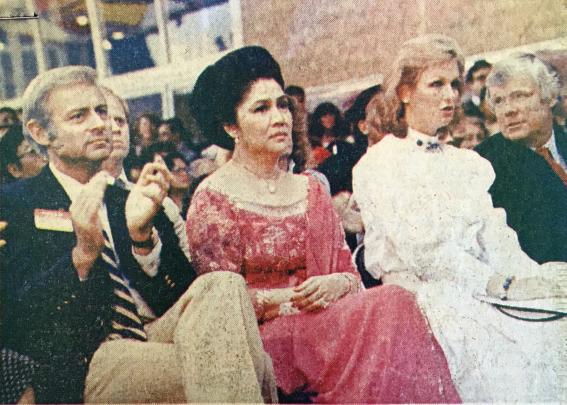 |
| Great Britain Car & TV of Royal Wedding | courtesy Miller Callaway | Philippines Pavilion newspaper clipping featuring Imelda Marcos | courtesy Miller Callaway |
7.) Some powerful heads of state visited the World’s Fair
Besides U.S. presidents Jimmy Carter and Ronald Reagan—who came separately, several months apart--there were Ferdinand and Imelda Marcos. The 65-year-old president of the Philippines, extremely controversial for several reasons, Marcos was in the U.S. for medical treatment, as his glamourous and famously extravagant 53-year-old wife, Imelda, often filled in for her husband. The two of them visited the fair together, including the proud Philippines pavilion; Imelda also visited by herself.
8.) The Fair included two tributes to two very different 20th-century Eastern European composers
Today, the Hungarian Pavilion is remembered mostly for its constantly turning giant Rubik’s Cube, but it also included a large graphic display honoring the legacy of composer Bela Bartok (1881-1945). Today, as it happens, the World’s Fair Park is home to the largest statue of a 20th-century Eastern European composer in the Western Hemisphere, but it’s not Bartok. The statue at the Cumberland Avenue end of the South Lawn is a tribute to Sergei Rachmaninoff, who performed the last concert of his career about a quarter mile from that spot in 1943, but the statue was installed more than a decade after the fair. Russia didn’t have a pavilion at the fair, but the Warsaw Philharmonic performed Rachmaninoff’s popular Symphony #2 at the Tennessee Amphitheatre during the fair.
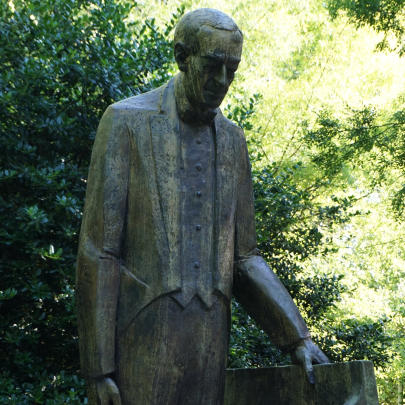 |
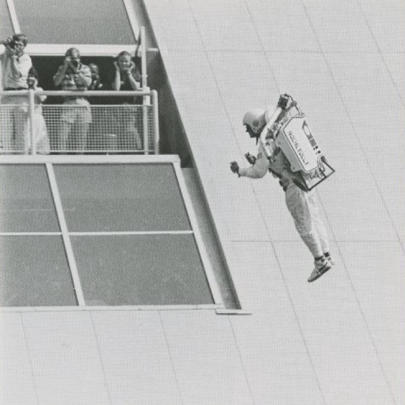 |
| Sergei Rachmaninoff Statue | courtesy Knoxville History Project | Rocket Belt Man | courtesy UT Libraries |
9.) Yes, there was really a jet-pack demonstration at the World’s Fair
By some accounts, the notoriously energy-inefficient jet pack was not originally intended to be part of the fair, but in 1982 many attendees remembered seeing the amazing jet-pack exhibitions at the 1964 World’s Fair in New York, and the Knoxville fair got many requests for the spectacle. Some insisted that any self-respecting world’s fair should have a jetpack show. The fair’s leadership obliged and brought one of America’s few trained jet-pack pilots, known as “Rocket Belt Man,” to Knoxville to demonstrate it during the United States national week in late June. Each of the flights—there may have been about a dozen of them that week--consisted of a brief aerial loop by the helmeted pilot around a water feature near the U.S. Pavilion, just south of the present-day Tennessee Amphitheatre. Jet-pack technology has improved little since then, and even in 2022, all jet-pack flights are still very brief, and the device has never become nearly as practical as James Bond found it to be in Thunderball.
10.) A major movie critic wrote a review of the Fair
In 1982, America’s most famous movie critic was probably the often-controversial Rex Reed, who was famously sharp-tongued even before Ebert and Siskel. He had even appeared as himself in the 1978 movie, Superman. Writing for GQ, Rex Reed turned in a mixed review of the Fair. Of all the national critics who came and wrote about Knoxville and the Fair, Reed may have been the only one who admitted having been to Knoxville before (he implied it was back in the ‘60s, due to his admiration of seminal film critic James Agee, who spent most of his youth in Knoxville). Reed gave the Fair a mixed review, as he did with most movies, remarking that the Fair was too scientific to be much fun, and that the international pavilions looked like “utility companies from outer space.”
11.) The U.S. Pavilion introduced something we now take for granted
Although descriptions of how it worked were often confusing, the hyper modernist U.S. Pavilion featured a computer of a sort that even techies had never seen before. At a time when office workers were still getting used to word processors, technicians demonstrated screens that changed by just touching them. Although it was not emphasized as much as its energy-saving message, and few tourists posed for photographs with it, this wonder surprised even some jaded New York journalists. Touch-screen technology did not become common in consumer electronics for almost 20 years after the Fair.
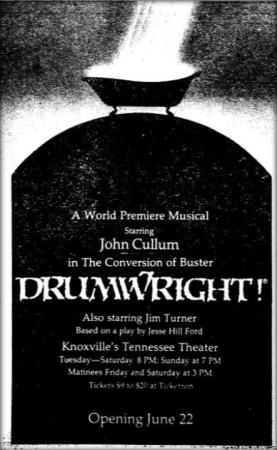 |
| Drumwright! At Tennessee Theatre | courtesy Knoxville History Project |
12.) Some of the World’s Fair took place at the Tennessee Theatre
The Tennessee Theatre, the 1928 motion-picture palace which had closed as a movie theater five years earlier and was an unrenovated dilemma, hosted a series of Fair-related performances and films. One was the gala World Premiere of a movie called Six Pack, the first big-screen movie to feature pop star Kenny Rogers. Rogers himself attended the premiere, but it’s unclear how many others in the cast, which included Diane Lane, Erin Grey, Anthony Michael Hall, and Barry Corbin—all of whom would be much more famous later—also attended.
The biggest performance at the Tennessee was a new Broadway-style musical play by Jesse Hill Ford called The Conversion of Buster Drumright (better known as Drumright!). It started Tony-winning singer and actor John Cullum in the title role, along with his son, JD Cullum, and Bobbi Jo Lathan, who were both headed for careers in movies and TV. Although the play was not the big hit its producers hoped it would be, it ran for 58 performances—making it likely the longest-running play in Knoxville history--and a total of 25,000 saw it at the Tennessee. Although it was apparently produced a few times afterward, it never made it to Broadway.
The cavernous old movie theater later became more known as a modern performance venue, and after major renovations, the Tennessee hosts dozens of performances every year, including Broadway shows.
13.) Japan came dressed to impress
The Japan pavilion was one of the Fair’s most impressive, with a jarringly realistic “bullet-train” ride, and a “painting robot,” who had a flair for the abstract. However, Japan’s rarest attraction was off site. The legendary Grand Kabuki Theatre of Japan does not tour often, and when it does, it appears mainly in the big cities. A very limited tour in 1982 included New York Metropolitan, the Kennedy Center in Washington—and Knoxville’s Civic Auditorium. In conjunction with the World’s Fair, these globally famous masters of their art gave seven sold-out performances, giving almost 20,000 people a chance to see a performance most Americans never have an opportunity to witness.
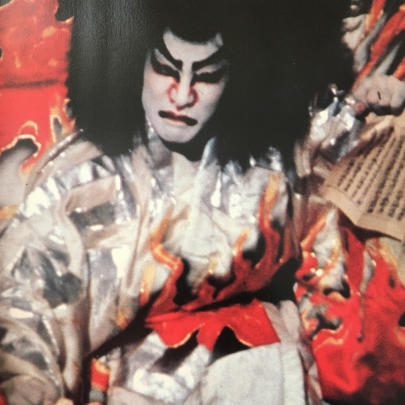 |
 |
| Japan Kabuki Program | courtesy Cheryl Lee | Japan Pavilion Painting Robot | courtesy David Myers |

